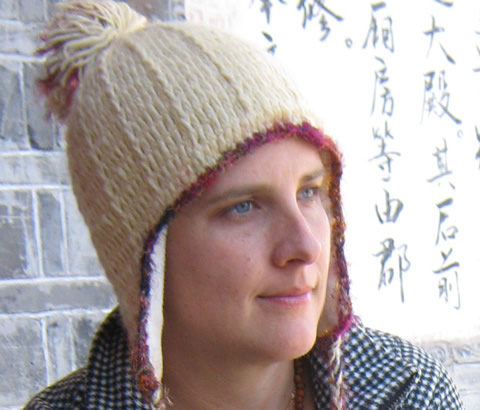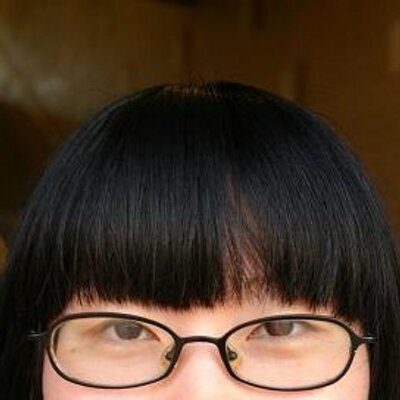Buddhist scriptures tell of a Bodhisattva who is known for compassion, who manifests in myriad shapes to help followers. In China, this Bodhisattva takes on a female form named Guan Yin, who is depicted as living in a purple bamboo grove.
Sarah Truman (BA 1997 Innis) started reading about Buddhism when she was eight, and became fascinated by Guan Yin. She dreamed about a house on a hillside in China and wondered if it could be the Bodhisattva’s home. Her interest continued when she was a U of T undergrad, majoring in English and philosophy. Truman took courses in Chinese philosophy and often visited the Royal Ontario Museum’s Buddhist and Daoist exhibitions. “I’d be drawn to that area because of all the Guan Yin statues,” she says.
Three years after graduating, Truman’s curiosity would lead her to travel across China to look for the Bodhisattva. And last fall, she published a book about her adventures, entitled Searching for Guan Yin (White Pine Press).
“Part of me knew that Guan Yin is a visual representation of a state of mind. Another part of me actually thought she lived in China,” says Truman, who worked as an English teacher and an editor at the University of Traditional Chinese Medicine in Nanjing. Her itinerary led to disheartening experiences at times. After a day’s travel to reach a temple in Sichuan province, the place was completely empty. “No statues and no people, except a cleaning lady who spat on the floor,” she says. When she went to a Tibetan lamasery, she found Bodhisattvas that were carved out of butter six months ago, to mark the new year – but they were in a state of ruination. “All of them were rancid and crumbling and there were rats eating the statue. It was quite a visceral experience,” she says.
Truman says if her experiences were a little sad, they were sad in a poetic and profound way – like a beautiful Chinese poem. “The disappointments were particularly positive in retrospect. I don’t want to sound all New-Agey or esoteric but I understand compassion, or Guan Yin, as the function of mind that removes illusion.” She rid herself of her own illusions throughout the journey, by letting go of her idea of Guan Yin as a literal being.
Truman was no longer attached to Guan Yin’s physical form by the time she visited Putuo Island, a place devoted to the Bodhisattva. She saw Guan Yin’s house, and it resembled the one in her dreams – but Truman says that didn’t matter anymore. “I had been fixated on the form, but she is a verb. So instead of looking for Guan Yin, I started trying to act like Guan Yin.”
“I had this idea that Guan Yin was something outside of myself that somehow would help me or guide me. Then I realized I had to do that myself. I and other humans tend to project things outside of ourselves instead of taking responsibility for our own minds,” she says. Studying qigong and meditation has helped her become more observant of herself and her surroundings.
Truman returned to Canada in 2004 and worked as an editor at a yoga magazine, then a long-haul truck driver, before studying to be a teacher. She went back to China, working as an English teacher at a British high school. Not one to stay put for long, Truman plans to return to Toronto soon. She was recently accepted to OISE for a master’s in curriculum research, studying the effects of meditation on writing and literacy.
Recent Posts
For Greener Buildings, We Need to Rethink How We Construct Them
To meet its pledge to be carbon neutral by 2050, Canada needs to cut emissions from the construction industry. Architecture prof Kelly Doran has ideas
U of T’s 197th Birthday Quiz
Test your knowledge of all things U of T in honour of the university’s 197th anniversary on March 15!
Are Cold Plunges Good for You?
Research suggests they are, in three ways





